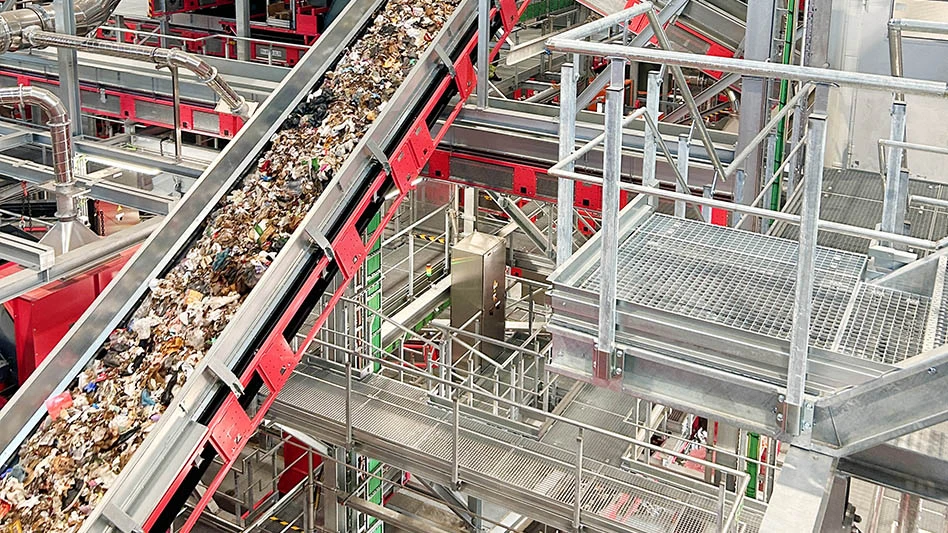
Balcones Resources built its Austin, Texas, MRF in 2012. In 2019. The company did a significant retrofit to the plant to adjust to changing market conditions, rising labor costs and an increase in incoming volume.
That upgrade included relocating an existing REB-2 250 two-ram baler from Sierra International Machinery, replacing it with a REB-4 250 model, which Sierra introduced in 2018.
“We wanted more production efficiency through faster bale production,” says Brent Perdue, general manager of Balcones’ Austin MRF. With the plant’s increased throughput, Balcones needed a baler that would be able to keep up to ensure maximum productivity at the facility.
Efficiency upgrade
Perdue says the REB-4 includes a number of features designed to improve efficiency. Chief among those features are dual-compression doors that are engineered to eliminate roll-back, hydraulic and shear shock, shear jams and bridging to produce denser bales using fewer strokes and shorter cycle times.
The dual-compression doors use 110 tons of force per door with door face pressure of 300 psi to push material below the cutting knife and into the baling chamber. Fully closed, the doors leave a minimal gap that requires shearing, reducing the area by 90 percent and allowing for an overall reduction in shear and hydraulic shock. This reduces stress on the blades and structure of the machine in addition to reducing energy costs.
“The precompression flap doors hold down material when the ram is engaged,” Perdue explains. “Because of this technology, we can get more material into the baling chamber at one time and less material must be sheared. You get less wear and tear on the shear blade because of that.”
Because the precompression feature maximizes the material in the baling chamber, operators can make a bale with fewer strokes, increasing production. This also reduces the strokes necessary for each bale, adding to the REB-4’s energy savings, which can be as great as 20 percent.
“The precompression doors are nice for mixed rigids,” Perdue says, as they provide enough force to counteract the memory of these containers.
The MRF’s plastic bales, which Perdue characterizes as “heavy and dense,” can weigh up to 1,500 pounds. The integrity of the bales also facilitates loading and storage, further increasing the efficiency of the MRF.
The REB-4 also is ideal for oversized material as the dual-compression doors prevent bridging and jams associated with shearing.
The installation
“The footprint is about the same,” he says of the REB-4 compared with the REB-2, which helped to facilitate the two-day installation process.
The REB-2 baler was removed and relocated to Balcones’ Dallas MRF to make room for the REB-4. He says the Dallas MRF handles roughly one-third of the volume that Balcones processes in Austin. “It’s a good fit for them,” he says of the 7-year-old machine with 30,000 hours. “It still works perfectly fine.”
While Perdue says he was “nervous” about the Austin installation, he adds that it “was on time and went really smoothly.”
Following the installation, Perdue says Sierra provided a couple of days of training to get their team up-to-speed on the new machine. He explains, “There was a little bit of a learning curve because there are different controls and settings, but it is not steep.”

Explore the September 2020 Issue
Check out more from this issue and find your next story to read.
Latest from Waste Today
- US Senate backs reduced cuts to EPA
- ELV Select Equipment, Reworld aid NYPD in secure firearm disposal
- Waste Connections announces Q2 results
- Returnity and Cosmoprof to address reusable bag waste
- SWANA releases report on aging WTE facilities
- New economic assessment reveals cost benefits of California’s SB 54
- Premier Truck Sales & Rental opens new facility
- TeknTrash Robotics, Sharp Group partner on humanoid robot pilot





